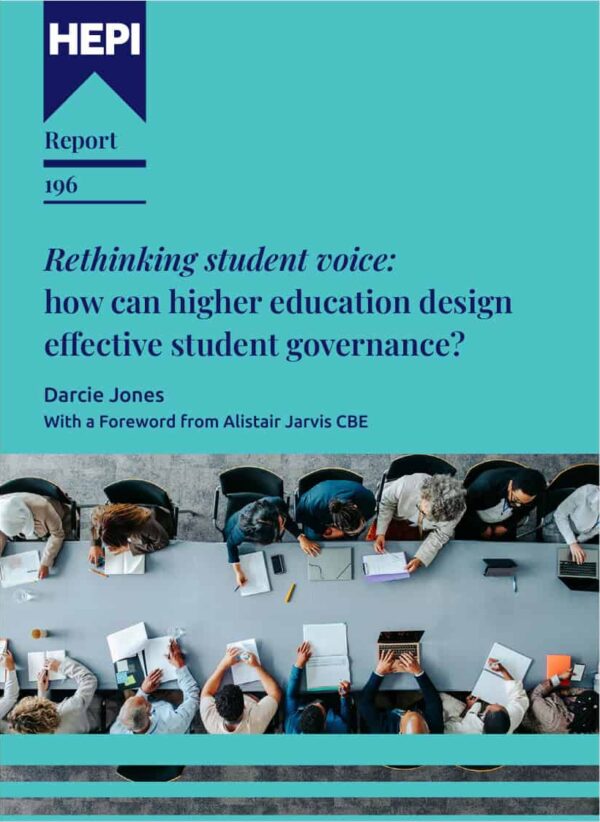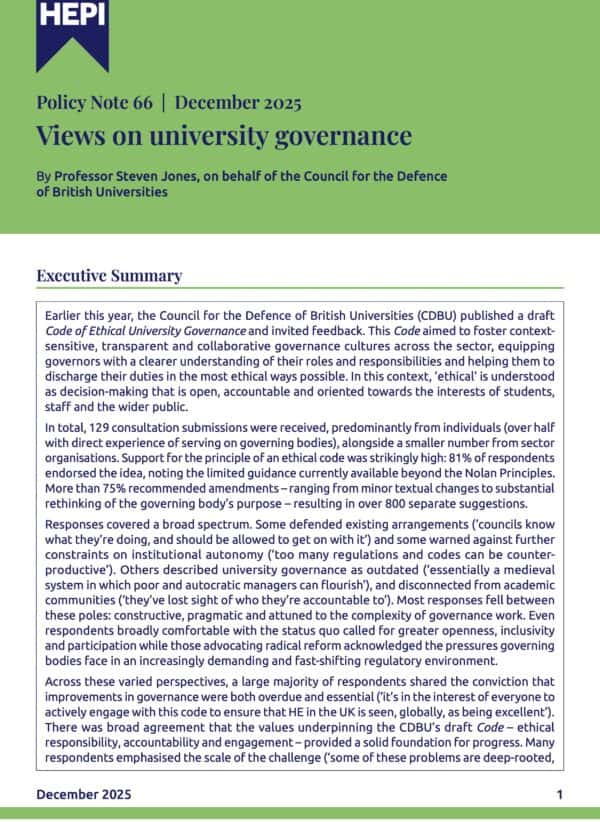Transforming higher education learning, assessment and engagement in the AI revolution: the how
By Derfel Owen, London School of Hygiene & Tropical Medicine and Janice Kay, Higher Futures.
Generative AI and other new technologies create unprecedented challenges to some of the deepest and longest-held assumptions about how we educate and support students. We start from a position that rejects a defensive stance, attempting to protect current practice from the perceived threat of AI. Bans, restrictions and policies to limit AI use have emerged in an effort to uphold existing norms. Such approaches risk isolating and alienating students who are using AI anyway and will fail to address its broader implications. The point is that AI forces us to reconsider and recapitulate current ways of how we teach, how we help students to learn, how we assess and how we engage and support. Four areas of how we educate require a greater focus:
- Critical Thinking and Problem-Solving: Teaching students to evaluate, analyse, and synthesise information while questioning AI-generated outputs.
- Creativity and Innovation: Focusing on nurturing original ideas, divergent thinking, and the ability to combine concepts in novel ways.
- Emotional Intelligence: Prioritising skills like empathy, communication, and collaboration, essential for leadership, teamwork, and human connection.
- Ethical Reasoning: Training students to navigate ethical dilemmas and critically evaluate the ethical implications of AI use in society.
Here we set out some practical steps that can be taken to shift us in that direction.
1. Emphasise Lifelong Learning and Entrepreneurialism
Education should equip students with the ability to adapt throughout their lives to rapidly evolving technologies, professions and industries. Fostering the ability to learn, unlearn, and relearn quickly in response to changing demands is essential. A well-rounded education will combine new and established knowledge across subjects and disciplines, building in an assumption that progress is made through interdisciplinary connections and creating space to explore the unknown, what we might not know yet and how we go about finding it.
The transformation of traditional work through AI and automation necessitates that students are fully equipped to thrive in flexible and diverse job markets. Entrepreneurial thinking should be nurtured by teaching students to identify problems, design innovative solutions, and create value in ways that AI can support but not replicate. Leadership development should focus on fostering decision-making, adaptability, and team-building skills, emphasising the inherently human aspects of leadership.
We should be aware that jobs and job skills in an AI world are evolving faster than our curricula. As McKinsey estimates, AI will transform or replace up to 800 million jobs globally, and the stakes are too high for incremental change.
2. Promote Originality and Rigour though Collaboration
AI’s strength lies in the processing speed and the sheer breadth of existing data and knowledge that it can access. It can tell you at exceptional pace what might have taken hours, days or weeks to discover. This should be viewed as a way to augment human capabilities and not as a crutch. Incorporating project-based, collaborative learning with AI will empower students to collaborate to create, solve problems, and innovate while reinforcing their roles as innovators and decision-makers. Working together should be a means of fostering communication skills, but can also be strengthened to encourage, promote and reward creativity and divergent thinking that goes further than conventional knowledge. Students should be encouraged to pursue discovery through critical thinking and verification, exploring unique, self-designed research questions or projects that demand deep thought and personal engagement. These steps will build digital confidence, ensuring students can use AI with confidence and assuredness, are able to test and understand its limitations and can leverage it as a tool to accelerate and underpin their innovation. Examples include generating content for campaigns or portfolio outputs, using AI to synthesise original data, demonstrating Socratic dialogue with AI and its outputs, challenging and critiquing prompts.
3. Redesign Assessments
Traditional assessments, such as essays and multiple-choice tests, are increasingly vulnerable to AI interference, and the value they add is increasingly questionable. To counter this, education should focus on performance-based assessments, such as presentations, debates, and real-time problem-solving, which showcase students’ ability to think critically and adapt quickly. Educators have moved away from such assessment methods in recent years because evidence suggests that biases creep into oral examinations. This needs reevaluating to judge the balance of risk in light of AI advancements. Stereotyping and halo biases can be mitigated and can increase student engagement with the assessment and subject matter. What is the greater risk? Biases in oral assessment? Or generating cohorts of graduates with skills to complete unseen, closed-book exams that are likely to be of limited value in a world in which deep and complex information and instruction can be accessed in a fraction of the time through AI? We must revisit these norms and assumptions.
Collaborative assessments should also be prioritised, using group projects that emphasise teamwork, negotiation, and interpersonal skills. Furthermore, process-oriented evaluation methods should be implemented to assess the learning process itself, including drafts, reflections, and iterative improvements, rather than solely the final outputs. Authenticity in learning outputs can be assured through reflective practices such as journals, portfolios, and presentations that require self-expression and cannot be easily replicated by AI, especially when accompanied by opportunities for students to explain their journey and how their knowledge and approach to a topic have evolved as they learn.
Achieving such radical change will require a dramatic scaling back of the arms race in assessment, dramatic reductions in multiple, modularised snapshot assessments. Shifting the assessment workload for staff and students is required, toward formative and more authentic assessments with in-built points of reflection. Mitigating more labour-intensive assessments, programme-wide assessment should be considered.
4. Encourage understanding of the impact of AI on society, resilience and adaptability
AI will accentuate the societal impact of and concerns about issues such as bias, privacy, and accountability. Utilising AI in teaching and assessment must build an expectation that students and graduates have an enquiring and sceptical mindsets, ready to seek further validation and assurance about facts as they are presented and how they were reached, what data was accessed and how; students need to be prepared and ready to unlearn and rebuild. This will require resilience and the ability to cope with failure, uncertainty, and ambiguity. A growth mindset, valuing continuous learning over static achievement, will help by enhancing their ability to adapt to evolving circumstances. Simulated scenario planning for real-world application of learning will help equip students with the skills to navigate AI-disrupted workplaces and industries successfully.
The new kid on the block, DeepSeek, has the important feature that it is an open-source reasoning model, low cost (appearing to beat OpenAI o1 that is neither open-source nor free) with the benefit that it sets out its ‘thinking’ step-by-step, helpful for learning and demonstrating learning. It is not, however, able to access external reports critical of the Chinese state, de facto showing that Gen AI models are wholly dependent on the large language data on which they are trained. Students need fully to understand this and its implications.
Navigating these wide-ranging challenges demands robust support for those shaping the student experience—educators, mentors, and assessors. They remain the heart of higher learning, guiding students through an era of unprecedented change. Yet, bridging the gap between established and emerging practices requires more than just adaptation; it calls for a transformation in how we approach learning itself. To thrive in an AI-integrated future, educators must not only enhance their own AI literacy but also foster open, critical dialogues about its ethical and practical dimensions. In this evolving landscape, everyone—students and educators alike—must embrace a shared journey of learning. The traditional role of the academic as the sole expert must give way to a more collaborative, inquiry-driven model. Only by reimagining the way we teach and learn can we ensure that AI serves as a tool for empowerment rather than a force for division.







Comments
A Jones says:
An interesting article but it assumes able, studious and thinking students-the cream of the crop. Likewise for the faculty doing the teaching/assessing of students. Increasingly, we are teaching far more less-able (not their fault), not as bright as their peers students, at the lower league table end who will, and already are, using AI for virtually everything they do!
Reply
Ros Lucas says:
Some positive thinking and comments that must be part of a combined/integrated Secondary/Tertiary/Higher education system discussion.
It is time for Secondary teachers to be convinced they are no longer the inputters for regurgitation and that self-directed independent learning is the way forward. The ‘teaching, tutoring, mentoring’ role will require a different mind set that encourages a need to involve more technology to learn, innovate and acquire employability skills.
Technology and use of digital learning of facts and knowledge for use in discussion and presentation
Reply
Add comment